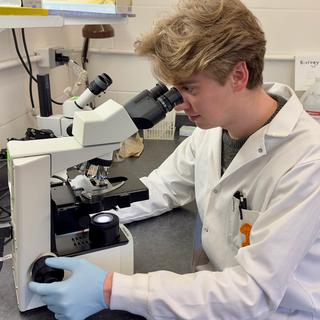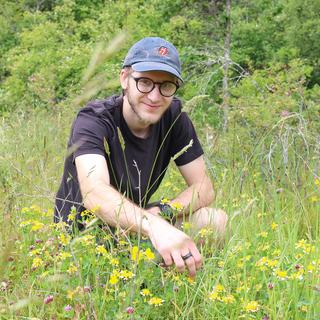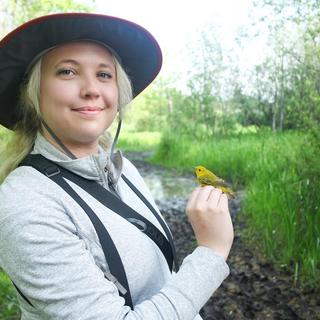Krystyn Forbes shares his Canada lynx research
Networking is an integral skill for students who want to pursue research, says Krystyn Forbes.
Krystyn graduated in June with a Bachelor of Science degree, with a Biology honours. He worked as a research assistant for the past two summers with Dr. Jamie Gorrell, a VIU Biology Professor. He recommends that students talk to their professors about research opportunities.
“It may be daunting at first, but most professors likely have some sort of research that they’re pursuing that you could help out with if it interests you,” he says. “It’s not something you’re locked into doing, you can discuss a project with a professor and if you do not think it fits what you want to do, they won’t be upset about you not wanting to do it.”
This summer Krystyn mentored the other research student in Jamie’s lab. He said it was a rewarding experience to pass on knowledge.
“I’ve always thought that one of the best ways to learn and concretize knowledge is to teach it. Explaining something so it’s understood by someone who does not have a strong background on the subject tests your true understanding of ideas and concepts in a way that greatly improves your knowledge on a topic,” says Krystyn. “Alongside this, I find answering questions also improves your understanding, especially in cases where you have to look into it further to answer it.”
Krystyn also worked with Jamie as part of his Biology 491 course on Canada lynx research. The course allows undergraduate students to complete a research project. Krystyn and Jamie are working together to submit a research paper on the Canada lynx research.
The Canada lynx and snowshoe hare populations fluctuate in size over a 10-year predator-prey cycle that has likely existed for thousands of years in North America. The lynx relies almost exclusively on the snowshoe hare for food. It will travel long distances for food as the snowshoe hare populations decline in certain areas, thought to result in high gene flow.
Krystyn examined the mitochondrial DNA of the Canada lynx. Because mitochondrial DNA is passed down maternally, he used this to see if there were any differences between the movements of male and female lynx.
“We didn’t find any difference between males and females,” says Krystyn. “With respect to gene flow, it seems they both disperse equally, which is interesting because it’s unusual in mammals for males and females to have the same dispersal behaviour.”
Krystyn says conducting undergraduate research is a great skill-building experience and has allowed him to gain confidence in lab techniques, critical thinking, analytical skills and writing scientific papers.
“Research is almost like a puzzle. You get a chance to deeply think about what you are working on. That is part of the allure of the job,” says Krystyn, adding that one of the things he likes about research is doing something that no one else has done before.




